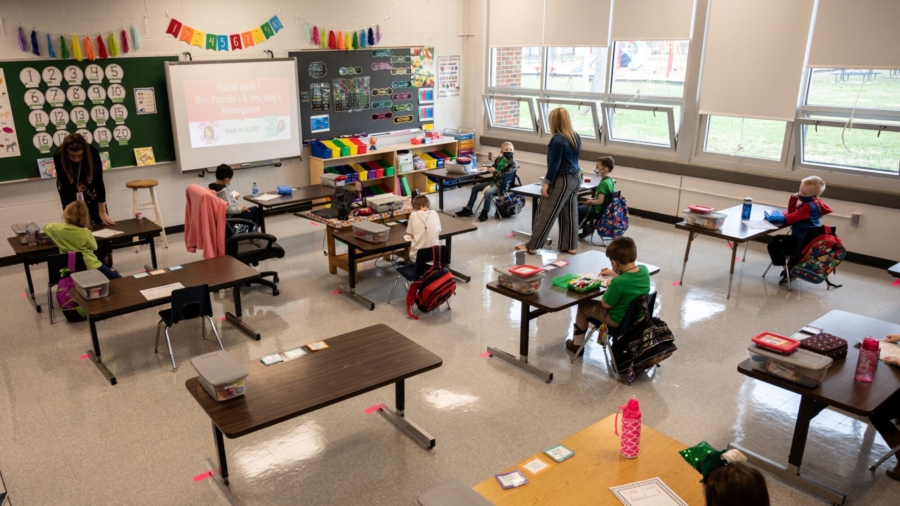Elementary school students in the United States fell behind five months in mathematics and four months in reading by the end of the 2020–21 school year, according to a new report.
Students faced a range of issues, including shifting schedules, being assigned new teachers in the middle of the year, difficulty connecting to the Internet, and weariness from classes conducted, for many, mostly online.
That led to a drop in performance and ending the year well-behind in math and reading, core learning components of elementary education, according to the report from McKinsey & Company.
The company compared performance in the spring of 2021 with the performance of similar students prior to the COVID-19 pandemic, using data from Curriculum Associates, which did in-school assessments of students across 50 states for math and 46 states for reading.
Students learned almost no new math over the final months of the 2019–20 school year, which was moved entirely online in virtually every state, and ended the next school year on average five months behind, according to the new report. Students did learn some reading in the early days of the pandemic, but at a slower pace. That pace increased slightly the following school year, and students ended the year on average four months behind.
“Put another way, the initial shock in reading was less severe, but the improvements to remote and hybrid learning seem to have had less impact in reading than they did in math,” the report stated.
Many schools stayed fully or partially remote well into the 2020–21 school year, though 98 percent of elementary students could learn at least part of the time in schools by the end of the year, according to Burbio, which tracked what types of learning schools were offering.
Other recent data indicate students were impacted by the abrupt shift to remote learning during the pandemic.
Fewer students were on grade level in reading and mathematics in the spring compared to historical averages, Curriculum Associates said earlier this month. Students in grades 1 through 8 were about 2 points behind pre-COVID expectations in reading and 6 points behind in math, Renaissance reported in April.
And the impact went beyond student performance. Both students and parents faced many challenges with the major changes imposed by states, with students suffering from grief, isolation, and uncertainty, the Department of Education said in a report (pdf) last month. That has been linked to a jump in suicides among some school-age children.
From The Epoch Times


